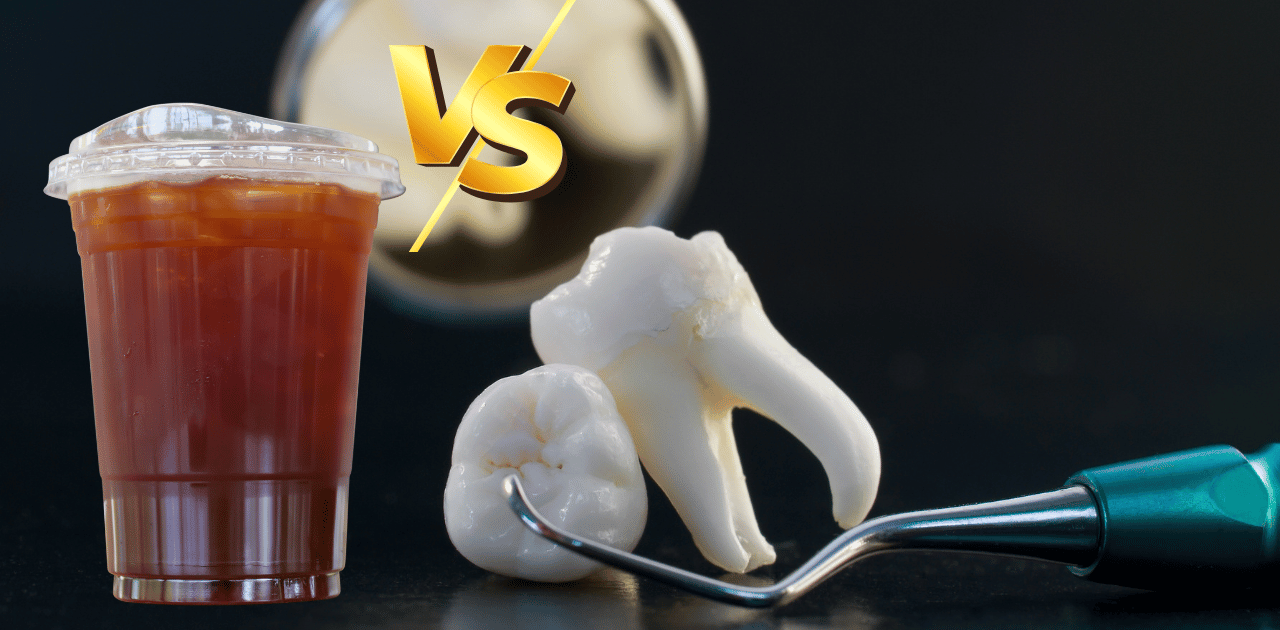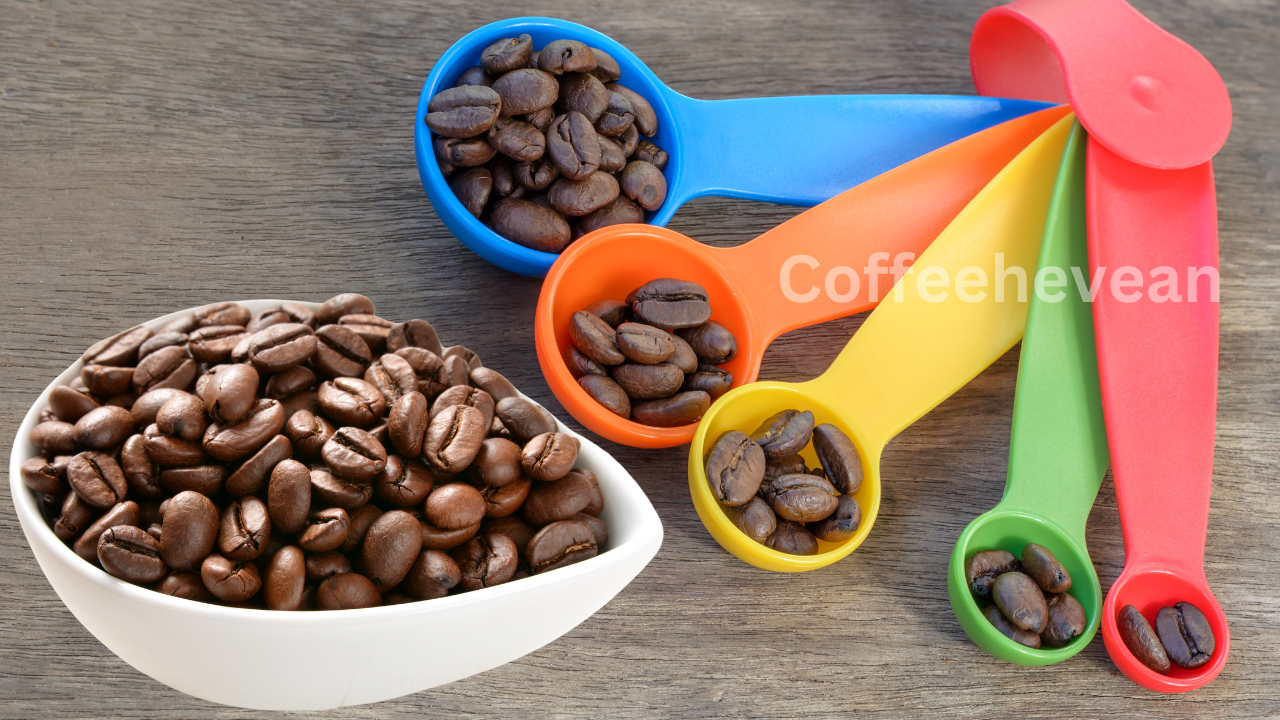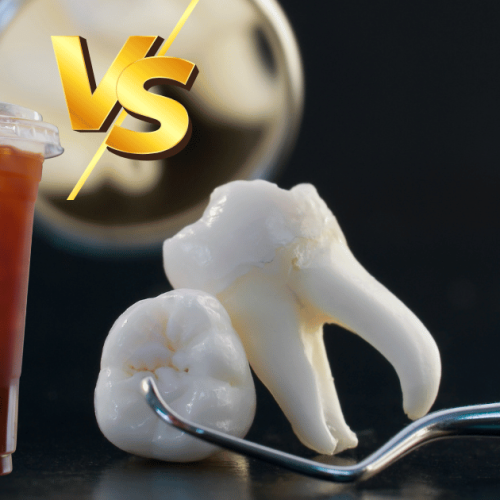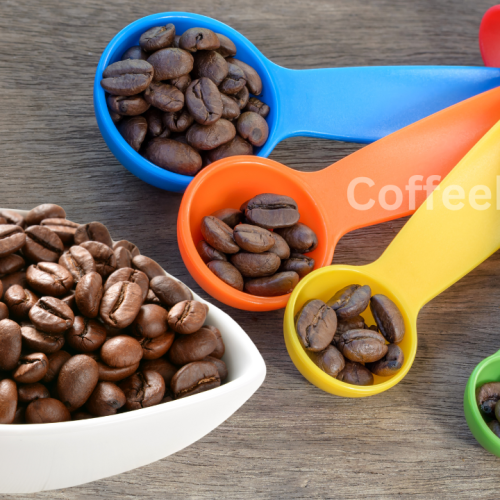Ever found yourself scratching your head over how many ounces are in a cup of coffee? You’re not alone! Coffee measurements can be surprisingly tricky to nail down because they don’t always follow the standard kitchen rules. While a standard cup in the US equals 8 fluid ounces, a “coffee cup” is often smaller, typically around 6 ounces. This difference can vary depending on brewing methods, regional practices, and even personal preferences.
Understanding the exact measurement matters more than you think. The number of ounces in your coffee cup directly impacts the coffee-to-water ratio, which affects the flavor, strength, and overall quality of your brew. Whether you’re brewing at home or enjoying a café experience, knowing these details can help you master your coffee game.
In this guide, we’ll explore the ins and outs of coffee measurements, why they can be confusing, and how to ensure your cup of joe is just right every time.
The Difference Between Ounces and Cups

At first glance, ounces and cups might seem like interchangeable terms, but they’re not quite the same. In the US, a standard cup equals 8 fluid ounces. This measurement is a universal standard used in cooking and baking. However, in the world of coffee, the “cup” gets a unique twist.
A coffee cup is often smaller than a standard kitchen cup, typically measuring 6 fluid ounces instead of 8. This difference exists because coffee brewing emphasizes flavor balance, and a smaller “cup” size helps maintain the ideal coffee-to-water ratio.
The inconsistency doesn’t stop there—different regions and cultures have their interpretations of a “cup.” For example, in Japan, a standard coffee cup is around 200 milliliters (roughly 6.76 ounces), while in Europe, it may be even smaller.
Why Coffee Measurements Can Be Confusing
Coffee measurements are confusing because they aren’t universally standardized. While we often assume a cup equals 8 ounces, coffee makers and cafes have their definitions. Some machines label a “cup” as 5 ounces, while others use 4 ounces.
Adding to the confusion, the size of mugs and coffee containers varies significantly. A large mug may hold 12 to 16 ounces, far exceeding a “coffee cup” size. Understanding these differences ensures you brew coffee to suit your taste and not just the label’s instructions.
Standard Measurements for a Cup of Coffee

When it comes to coffee, the term “cup” doesn’t always mean the same thing. Unlike the universal kitchen measurement of 8 fluid ounces, coffee has its own set of standards that vary based on brewing methods, regions, and even equipment manufacturers. Here’s a breakdown of the common standards:
The US Standard Cup Measurement
In the US, a standard measuring cup holds 8 fluid ounces. This measurement applies to most cooking and baking recipes. However, in the coffee world, this standard doesn’t always hold up. Coffee makers and brewing guides often refer to a “cup” as 6 fluid ounces instead of the usual 8.
The Coffee Cup Measurement
The coffee industry uses a slightly smaller cup measurement to ensure a better coffee-to-water ratio. This adjustment is why many coffee machines label a cup as 6 ounces. This smaller size balances the coffee’s flavor and strength, avoiding over-dilution.
The Role of Coffee Mugs
The mugs we drink from often create more confusion. Most coffee mugs hold between 12 and 16 ounces, far exceeding the 6-ounce “coffee cup” standard. If you’re brewing for a large mug, you’ll need to adjust your coffee-to-water ratio accordingly to maintain flavor.
How Many Ounces Are in a Cup of Coffee?

The number of ounces in a cup of coffee depends on the context, and it’s not always straightforward. In the United States, a standard kitchen cup holds 8 fluid ounces. However, in the coffee world, a “cup” is often defined as 6 fluid ounces. This discrepancy stems from the coffee industry’s focus on achieving the perfect coffee-to-water ratio for an ideal brew.
When you look at coffee makers, especially drip machines, you’ll notice that a “cup” on their markings typically equals 6 ounces. This measurement ensures a stronger, more flavorful coffee compared to what would result from an 8-ounce cup.
Adding to the confusion is the size of mugs and drinking vessels. Most coffee mugs hold between 12 and 16 ounces, much larger than the standard coffee cup. This means you’re likely brewing multiple “cups” of coffee for a single mug.
The definition of a coffee cup can also vary by region. In some European countries, a cup might be as small as 4 to 5 ounces. Understanding these variations is essential for consistent brewing. Whether you prefer a standard kitchen cup, a coffee cup, or a mug, knowing the size ensures your coffee tastes just right every time.
Factors That Affect Coffee Measurements
Coffee measurements aren’t as straightforward as they seem. Several factors influence how much coffee or water you should use and how much liquid your cup or mug holds. Understanding these factors can help you brew a cup of coffee that suits your taste perfectly.
1. Brewing Methods and Equipment
The brewing method you use significantly affects coffee measurements. For example:
- Drip Coffee Makers: Often measure a “cup” as 6 ounces.
- French Press: Requires coarser grounds and typically larger coffee-to-water ratios.
- Espresso Machines: Use smaller, concentrated shots (1 ounce per shot).
Each method has unique measurement standards, so adjusting accordingly ensures optimal flavor.
2. Regional Differences in Coffee Cups
In the US, a coffee cup is often 6 ounces, but internationally, this varies. For instance, in Europe, a coffee cup can be as small as 4 ounces. In Japan, it’s closer to 6.76 ounces (200 milliliters). These differences can confuse international coffee enthusiasts or travelers.
3. Size of Your Mug
The mug you use may hold far more than the standard 6-ounce coffee cup. Most mugs range from 12 to 16 ounces, requiring you to brew multiple “cups” to fill a single mug. Always consider your mug’s capacity when brewing.
4. Coffee-to-Water Ratio Preferences
The amount of coffee grounds per ounce of water plays a vital role in measurements. Some prefer a stronger brew (1:15 ratio), while others prefer it milder (1:18). Adjusting this ratio helps tailor the strength of your coffee to your liking.
5. Personal Taste and Strength Preferences
Finally, your taste preferences also influence coffee measurements. If you enjoy a robust coffee, you might add more grounds or reduce water, while those who prefer a lighter taste might do the opposite.
Coffee-to-Water Ratio Explained
The coffee-to-water ratio is one of the most important factors in brewing the perfect cup of coffee. It determines the strength, flavor, and overall quality of your brew. If you get the ratio wrong, you might end up with coffee that’s either too weak or too strong. So, understanding how to adjust the ratio according to your preferences is key to making coffee that suits your taste perfectly.
The Golden Ratio for Brewing Coffee
A widely accepted “golden ratio” for brewing coffee is 1:15, meaning for every 1 gram of coffee, you should use 15 grams of water. This ratio tends to produce a balanced, flavorful cup of coffee. However, it’s not a one-size-fits-all rule. Depending on the brewing method, you might need to adjust the ratio slightly. For example:
- Drip Coffee Makers: A ratio of 1:15 to 1:17 is typical, where the coffee grounds are finely ground.
- French Press: The ratio is often stronger, like 1:12, due to the longer brewing time.
- Espresso: Typically uses a much higher concentration, with a 1:2 ratio (1 gram of coffee to 2 grams of water).
How Ounces of Coffee Grounds Affect the Brew
If you measure coffee by weight (grams), the ratio is easy to control. However, if you’re measuring by volume (using tablespoons or ounces), keep in mind that the grind size and density of the coffee grounds play a role. For instance, one ounce of whole bean coffee can yield different amounts depending on how finely or coarsely it’s ground.
Adjusting the Ratio to Suit Your Preferences
Some coffee drinkers prefer a bolder, more concentrated brew, while others like it milder. If you want a stronger cup, increase the amount of coffee grounds or reduce the amount of water. On the other hand, for a lighter brew, decrease the coffee grounds or use more water. Experimenting with the ratio until you find the perfect balance will allow you to craft a cup of coffee that is uniquely tailored to your taste.
Practical Tips for Measuring Coffee Correctly
Getting the right coffee measurements is crucial to brewing a cup that suits your taste. Whether you’re a coffee novice or a seasoned enthusiast, using the correct amount of coffee grounds and water can make all the difference in the final result. Here are some practical tips to help you measure coffee more accurately and consistently.
1. Use a Kitchen Scale
One of the most accurate ways to measure coffee is by weight, not volume. A kitchen scale allows you to measure both your coffee grounds and water with precision. By using grams, you can follow a specific coffee-to-water ratio (like 1:15 or 1:16) for the perfect brew every time. A scale ensures that you’re consistent, whether you’re brewing a single cup or a larger pot.
Tip: If you’re using a scale, tare the container before measuring the coffee grounds and water to ensure accurate measurements.
2. Invest in a Measuring Scoop
If you don’t have a scale, a measuring scoop is a great alternative. Many coffee brands provide scoops with their bags, which typically hold about 1 tablespoon of coffee grounds. However, keep in mind that scoops vary, and not all tablespoons are created equal. To maintain consistency, it’s essential to know how much coffee a scoop holds in terms of weight (usually around 5 to 7 grams per tablespoon of ground coffee).
3. Use a Coffee-Specific Measuring Spoon
For more precision, consider investing in a coffee-specific measuring spoon. These spoons are designed to hold the right amount of coffee for various brewing methods. For example, a standard coffee scoop often holds 1 tablespoon of ground coffee, which is about 5 grams. If you’re aiming for a specific ratio, using a measuring spoon can help you achieve consistency every time you brew.
4. Measure Water by Volume
When measuring water, it’s usually fine to rely on volume (fluid ounces or milliliters). A standard coffee maker or French press will often have measurements marked on the side, but if you’re brewing by hand, measuring water with a liquid measuring cup is essential. For optimal results, follow the water-to-coffee ratio suggested by your brewing method.
5. Adjust According to Your Preferences
Once you have the basic measurements down, don’t be afraid to tweak the amount of coffee or water to suit your taste. If you find that your coffee is too weak, add a little more coffee next time. If it’s too strong, reduce the amount of coffee grounds or increase the water. Experimenting with your ideal ratio is part of the fun of brewing coffee.
Why is a Coffee Cup Smaller Than a Regular Cup?
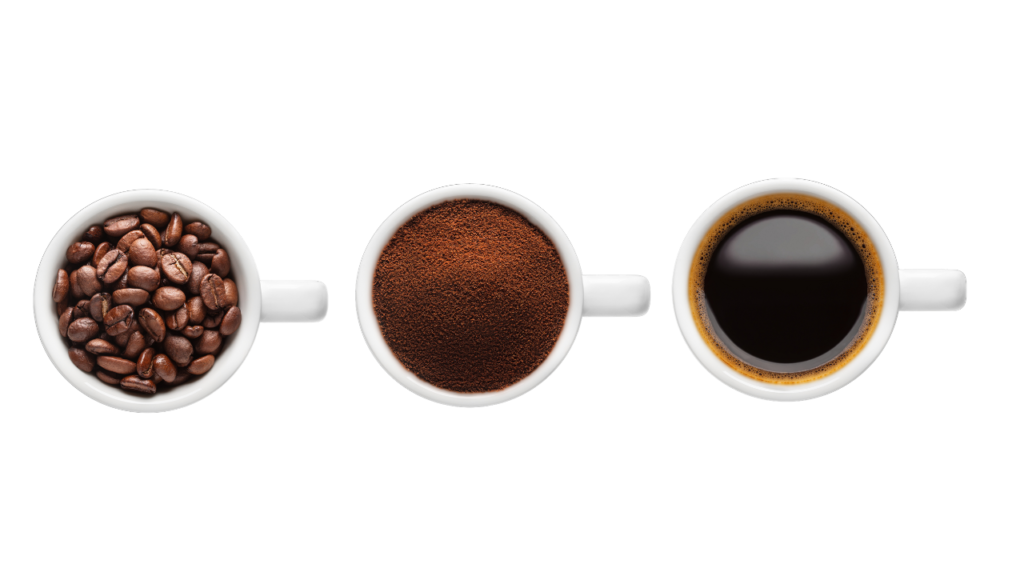
The reason a coffee cup is often smaller than a regular cup comes down to several practical and cultural factors related to brewing and serving coffee. Here’s why coffee cups are typically designed to be smaller:
1. Optimal Coffee-to-Water Ratio
The primary reason a coffee cup is smaller is to achieve a balanced coffee-to-water ratio for brewing. A regular kitchen cup holds 8 fluid ounces, which might be too much water for the ideal coffee strength. Coffee makers often use a 6-ounce “cup” measurement to maintain the proper ratio, which ensures that the coffee is neither too weak nor too strong. A smaller cup helps concentrate the flavor, giving you a richer and more satisfying taste.
2. Coffee is Meant to Be Sipped, Not Chugged
Coffee is traditionally a drink meant to be savored in small amounts. Unlike water or soft drinks, coffee is typically consumed in smaller quantities to enjoy the full flavor and aroma. The smaller cup size encourages moderation, allowing the coffee drinker to enjoy each sip slowly and mindfully.
3. Caffeine Content and Serving Size
Coffee is naturally more concentrated than other beverages, especially espresso-based drinks. A smaller cup allows for a more manageable serving size, so you’re not consuming excessive caffeine all at once. This helps avoid over-caffeinating, which can lead to jitters or discomfort. A smaller coffee cup provides just the right amount for a satisfying boost without going overboard.
4. Cultural Practices
In many cultures, coffee is typically served in smaller cups, especially when it’s a special or formal occasion. For example, in countries like Italy and France, espresso is commonly served in small cups (about 2 to 3 ounces), emphasizing the idea of sipping a concentrated, flavorful drink. Serving coffee in smaller cups is a long-standing tradition, making the experience feel more refined and intentional.
5. The Evolution of Coffee Mugs
While traditional coffee cups are smaller, the rise of larger coffee mugs is a relatively modern development. Many people now prefer larger mugs for convenience, especially for home brewing. These mugs can hold 12 to 16 ounces, often requiring adjustments in the coffee-to-water ratio to maintain the right flavor. The shift to bigger mugs reflects changing habits, but smaller coffee cups remain the standard in professional and traditional settings.
How Do I Ensure Consistent Coffee Measurements?
Achieving consistency in coffee measurements is key to brewing a perfect cup every time. Small variations in the amount of coffee or water can significantly impact the flavor, strength, and overall quality of your coffee. Here are some practical steps you can follow to ensure you measure your coffee accurately and consistently:
1. Tare (reset) the scale before measuring each ingredient to avoid any leftover weight from the container or carafe.
2. Follow a Standard Coffee-to-Water Ratio
To maintain consistency, stick to a standard coffee-to-water ratio. The golden rule is a ratio of 1:15 or 1:16, meaning for every 1 gram of coffee, you should use 15 to 16 grams of water. Depending on your preferred brew strength, you can adjust the ratio slightly. For instance:
- For a stronger brew, use more coffee or less water.
- For a lighter brew, use less coffee or more water.
3. Measure Coffee Grounds by Weight, Not Volume
If you don’t have a scale, you can use a measuring scoop, but it’s important to note that scoops aren’t always consistent. The density of the coffee grounds can vary depending on the grind size (coarse or fine) and the brand of coffee. Weighing your coffee grounds ensures you’re using the correct amount each time.
Tip: If you must use a scoop, try to use one that is specifically designed for coffee measurements, as these are more likely to provide consistency.
4. Use the Same Brewing Method Every Time
Consistency is not only about measuring ingredients; it also involves following the same brewing process. Whether you use a drip coffee maker, French press, pour-over, or espresso machine, stick to the same method each time. Each brewing method may require slight adjustments in the amount of coffee or water used, so once you find what works for you, repeat the process.
Tip: Take notes on the settings, coffee amount, and water amount for each method, so you can replicate it perfectly next time.
5. Use Fresh, High-Quality Coffee Beans
Freshness plays a huge role in achieving consistent flavor. Old or stale coffee beans can impact the accuracy of your measurements, as they may not absorb water or release flavor in the same way as fresh beans. Make sure to buy fresh coffee and store it properly to maintain consistency in your brews.
Tip: Grind your coffee just before brewing to preserve its freshness and prevent over- or under-extraction.
6. Stick to One Measuring Tool
Consistency can be impacted by switching between different types of measuring cups, spoons, or scales. Using the same tool for measuring coffee and water every time helps reduce variability in your brew. Whether it’s a specific scoop or scale, try to stick with one reliable tool.
Conclusion
Ensuring consistent coffee measurements is essential for brewing the perfect cup every time. By using a kitchen scale, sticking to standard coffee-to-water ratios, and measuring by weight rather than volume, you can achieve consistency and flavor in every brew. Additionally, following the same brewing method and using fresh, high-quality beans will further enhance your results. With these simple practices, you’ll be able to fine-tune your coffee-making process and enjoy a delicious, well-balanced cup every time. Consistency is key to crafting the ideal brew, making your coffee routine more enjoyable and reliable.
FAQs
1. How many tablespoons of ground coffee are in a cup?
Typically, one tablespoon of ground coffee is about 5 grams. For a standard 6-ounce cup of coffee, you would use about 1 to 1.5 tablespoons of coffee grounds. Adjust the amount based on your preferred strength.
2. Is it necessary to weigh coffee grounds?
Weighing coffee grounds ensures accuracy and consistency. While it’s not strictly necessary, it is the most precise way to measure your coffee, especially if you want to maintain a consistent taste and strength in your brews.
3. Can I use a regular cup for coffee measurements?
Yes, but remember that a standard kitchen cup typically holds 8 ounces, while coffee makers often measure a “cup” as 6 ounces. If you’re brewing with a different vessel, adjust the amount of coffee accordingly to maintain the proper strength.
4. Does the grind size affect the coffee measurement?
Yes, the grind size impacts how much coffee is extracted during brewing. Finer grounds may result in a stronger brew, while coarser grounds may yield a lighter flavor. Adjust your measurements accordingly to maintain the correct strength.
5. How can I adjust the coffee-to-water ratio for stronger coffee?
To make your coffee stronger, use more coffee grounds or reduce the amount of water. A typical ratio for a stronger brew could be 1:14 or 1:12 (coffee to water) instead of the standard 1:15. Adjust to taste.
Read to know more: Can You Eat Coffee Beans? Exploring the Health Benefits and Risks

